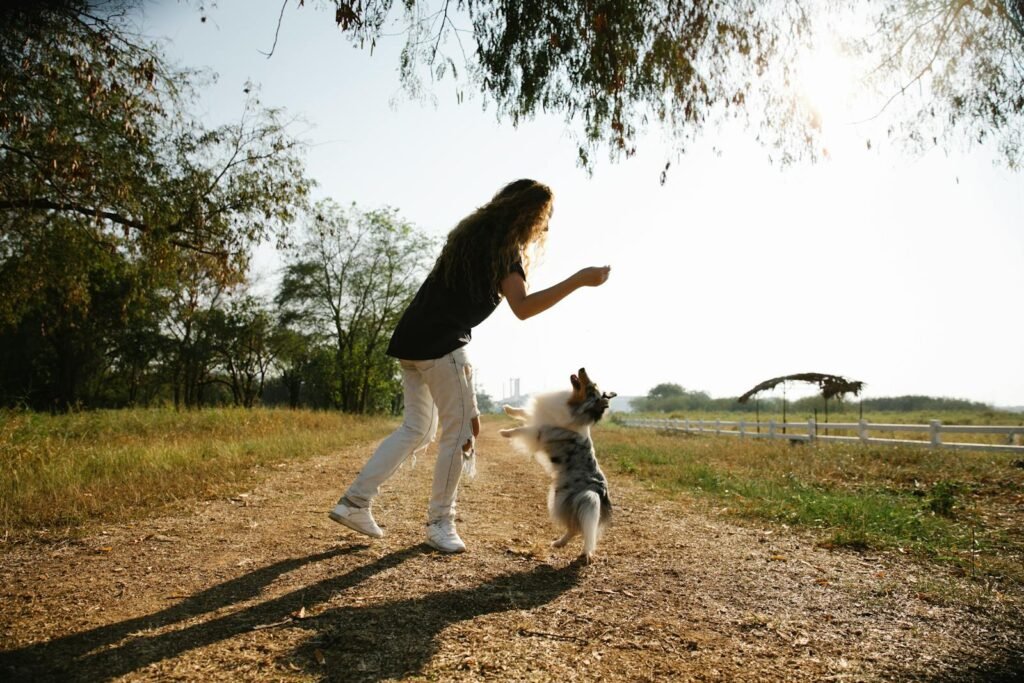We’ve all heard that stress can take a toll on our relationships — but what if your job stress is affecting your dog, too?
According to a new study published in Scientific Reports, your furry friend might be picking up more than just treats and belly rubs from you. They’re picking up your work worries, too.
The Science Behind the Stress Crossover

In the study, researchers asked 85 employed pet parents to fill out surveys about their job stress levels and their dog’s behavior. To measure human stress, they used tools like the Subjective Job Stress Scale and the Work-Related Rumination Scale, which evaluates how much people dwell on work outside of work hours.
As for the dogs? Pet parents reported how often their pup exhibited 11 specific stress-related behaviors — such as pacing, whining, or excessive vocalizing.
“Dogs whose owners had high levels of work stress and rumination showed significantly more signs of stress,” the study’s lead author noted. “It’s a clear sign of emotional crossover between humans and their pets.”
Interestingly, pet parents didn’t always recognize when their dogs were distressed.
“There was no significant relationship between how stressed owners thought their dogs were and how much stress the dogs actually showed,” researchers added.
Why Dogs Feel What You Feel

This crossover effect isn’t surprising to scientists who study the emotional bond between humans and dogs.
“Dogs are extremely sensitive to human emotion,” says Dr. Elizabeth Arguelles, a veterinary behaviorist and expert in animal behavior. “They notice changes in our tone, facial expressions, and how we move. If we’re tense or distracted because of work, our dogs don’t just notice — they respond.”
When you’re mentally checked out, replaying meetings or stressing about deadlines, you may not be fully present with your pet — and they can feel that emotional distance.
The Good News: Dogs Can Also Help Bust Stress

If your stress is rubbing off on your dog, don’t panic — the solution is in your paws.
“Spending time with your dog is one of the best natural stress relievers out there,” says Dr. Megan Mueller, co-director of the Tufts Institute for Human-Animal Interaction. “Even a few minutes of petting a dog can lower cortisol levels and boost feel-good hormones like oxytocin.”
Whether it’s a walk, a game of fetch, or some relaxing couch time, shared activities are a powerful way for both pet and parent to decompress.
Tools to Help You De-Stress Together

The study suggests that rumination — or dwelling on work-related thoughts during off-hours — plays a big role in transferring stress to our dogs. One way to break that cycle is by becoming more mindful and present when you’re with your pet. This could mean putting your phone down, stepping away from screens, and tuning into your dog’s needs with intention. Even just observing their behavior more closely can strengthen your bond and reduce stress on both sides.
Integrating simple, shared routines into your day can go a long way. Try a morning walk to reset before work begins, take a midday break to play fetch in the yard, or unwind with a cuddle session before bed. These small acts of connection help lower anxiety and give both you and your dog something to look forward to — together.
Peace Begins with a Paw

Your stress might be contagious — but so is your calm.
“Mindfulness with your dog can be a simple but powerful practice,” Dr. Mueller reminds us. “It’s not about doing more. It’s about being more present.”
So the next time work stress creeps into your weekend or weekday evening, don’t power through it alone. Turn to your pup — they’re not just your best friend, they’re your wellness partner.







